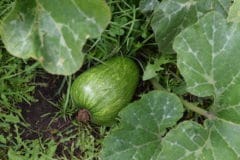Planting Jicama
This tropical plant loves the sun, and rich loamy or sandy soil. Prepare a planting bed, or it can also go in a large container. Test the soil with a PH meter for acidity. Jicama prefers alkaline soils with a pH above 7. A little baking soda applied to the surface can raise the pH of your soil if it’s necessary.
Soak jicama seeds in water for 24 hours before planting. Seeds require warm temperatures to germinate, so put the planting trays on a heating pad or in a heated area.
In the tropics, sow jicama seed anytime. Keep them well watered and in a warm location. In cooler areas, sow seed indoors or in a climate controlled greenhouse 8-9 weeks before the last frost in your region.
Planting Checklist for Jicama
- Full Sun
- Rich Alkaline Soil
- Well-Draining
- Heated Germination Area
- Pre-soak Seeds for 24 Hours
- Frost Intolerant
Plant Care
Keep soil medium-moist. This means that it’s okay if the surface feels dry, only water when it feels dry beneath the soil surface. Plants can be acclimated and transplanted outside once the weather shows no danger of frost.
Jicama is a vine, so it requires staking to climb as it lengthens. Place a tomato stake next to the growing vine and secure it to the stake with twine or garden tape. Keep the ties loose, you don’t want to risk damaging the plant.
Jicama plants produce beautiful pea-like purple flowers. Unfortunately, to get the most tuber production they should be removed. The flowers and seeds of the jicama plants are highly toxic. They can be harmful to wildlife, children, and pets so it is best to avoid producing and scattering them.
A positive aspect of the vine being poisonous is that it does not have many pest issues. There is rarely a need to worry about bugs damaging jicama.
Harvesting Jicama
Harvest the tubers before the first frost in the fall. You want to wait as long as possible, but not risk them rotting in the ground. Tubers should be between 3-6 inches in diameter. If a vine shows signs of drying, browning, or dying then go ahead and harvest it.
Don’t store jicama roots in the refrigerator. In fact, don’t store them anywhere temperatures will drop below 50°F (10°C). A root cellar is an ideal place to store jicama tubers.












